
Anyone who witnessed Na Vorro Bowman’s injury live on TV was quivering for a while. Cameron Meredith also suffered the same fate more recently. This injury looked brutal on TV. My immediate diagnosis was that Bowman and Meredith had probably torn their ACL and their MCL. Injuries to either the ACL or the MCL can lead to predictable results. Multi-ligament injuries involve much more surgery, a longer recovery time, and a worse prognosis. This post will cover how combined injuries to both the MCL and ACL are managed.
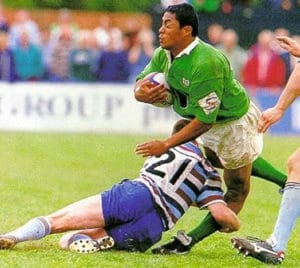
The 49ers feared that linebacker NaVorro Bowman injured both his ACL and MCL against the Seahawks on Sunday and those fears have been realized.
Most people understand that an isolated ACL injury is usually followed by a brief course of therapy to resolve your stiffness and prepare your knee for surgical repair. Combined injuries to the ACL and MCL might need to be managed differently.
For patients with an isolated MCL or medial collateral ligament tear, the treatment will vary depending on the “grade” of the tear. MCL tears are graded as complete (Type 3) or partial Types 1, and 2). Partial tears of the MCL will almost always heal with time, bracing and physical therapy. Complete, but isolated grade 3 tears of the MCL generally require an open repair of the MCL followed by a period of bracing and then physical therapy.
ACL and MCL Combined Injuries
When both the ACL and the MCL are torn, the timing of treatment is critical. The MCL becomes the critical factor in early management of these combined injuries. If the MCL is a grade 3 complete tear then it needs to be repaired soon after the injury. Otherwise, the MCL ligament will scar and shorten making a repair difficult. This threatens the overall recovery and ability to return to sports.
Surgery for ACL and MCL combined injuries can take place in 2 separate procedures, or it can be accomplished at the same time with an MCL repair and an ACL reconstruction. If it is pursued in two separate surgeries then once the MCL ligament is repaired, and once the athlete has recovered, an additional surgery to reconstruct the ACL is necessary. This is not a common approach in professional or elite athletes. MCL injuries and MCL surgery can produce significant stiffness in the knee. ACL reconstructions can also produce significant stiffness. Having surgery on both the MCL and the ACL at the same time might not be the right approach for everyone. Having surgery on both the ACL and the MCL at the same time raises the risk of having permanent stiffness.
When dealing with an elite or professional athlete we usually approach this injury with a single surgery. The MCL can be repaired in a traditional sense. The torn ends of the MCL are sewn together or anchored to the bone if they tore off of the bone. As you know, the ACL can not be primarily repaired. The ACL needs to be reconstructed. When talking about professional football players, the most common graft choice for an ACL reconstruction is a bone-patella tendon-bone autograft. Other ACL graft choices are available and might be appropriate for athletes in other sports. In order to allow for immediate motion after a combined ACL/MCL surgery we may place an “internal brace” on the MCL repair to protect it so we can start immediate motion exercises to decrease the risk of stiffness.
Recovery from combined ACL and MCL injuries.
The recovery from a combined injury is often quite long. It takes the athlete more time to get their normal motion back when both ligaments are operated on. After the MCL heals in approximately 6 weeks, a more traditional ACL rehabilitation schedule can begin.
This is a long recovery process and many people do very well if a combined ACL/ MCL injury is managed in a timely manner. Whether or not Meredith can return to professional sports is an open ended question. Not all professionals can return after an isolated ACL tear. Return to play statistics predict that recovery and return to sports is likely. Sadly, the statistics also show that their careers are generally shorter than those of athletes that do not tear their ACL.
Do you have questions regarding an Orthopedic injury or longevity?
Do you want to talk to an expert who can listen to you for 45-60 minutes and explain the options in detail?
Dr. Howard Luks offers remote guidance sessions to review your X-ray or MRI images and explain your options.
Dr. Luks has also received hundreds of requests for educational sessions on the topics discussed in his book, Longevity Simplified.


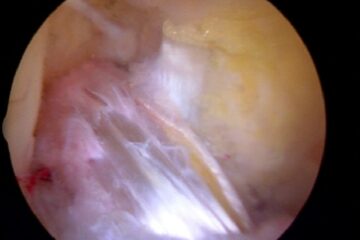
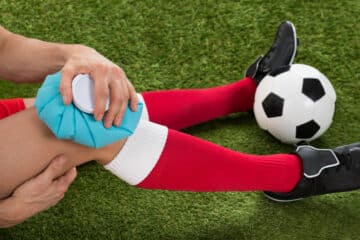
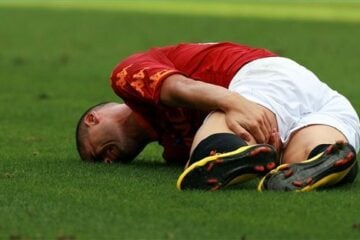






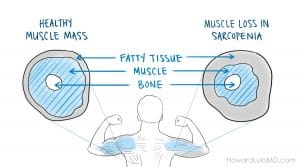

liane mair
Hello Dr.Luks,
I am an expert skiier who yesterday had a humbling entanglement getting off a chair on the mountain. I did the splits and rotated my right knee, completely tearing the MCL (level 3), ACL (level 3) and with differing opinions about the state of the meniscii. I was advised after the MRI to let the swelling go down for at least 2 weeks while I pursued surgery options. Not being a professional athlete, I’m wondering if separate operations are better than one combined?
Your opinion most welcome!
Good question… This is one of those skill sets that experienced docs have that are hard to explain. There are folks who may be able to have the MCL repaired and the ACL reconstructed at the same time, and there are folks who should have the MCL repaired and a delayed ACLR. Our physical examination matters a lot in this scenario. Some grade 3 tears on MRI– are not grade 3 on the exam. Most of those grade 2’s will heal without surgery.
S
I tore my ACL and MCL in a fall while skiing on Dec 7. The surgeon recommended that I wear a hinged knee brace 24/7 for 8 weeks to get the MCL to heal, and then get ACL surgery, with a hybrid graft of combined allograft and hamstring (semitendinosus). I am currently walking on it carefully with the brace and doing ROM and non-weight bearing muscle strengthening exercises. I have stiffness and range of motion about 0 to 95 right now, but very little pain as long as I am careful to keep it aligned and not sleep on my side. I’m a 54 year old female. Does this, including the hybrid graft, sound like a reasonable approach? Will I be likely to lose hamstring strength long term? I intend to ski again and the surgeon said I should be able to do so after PT and the complete healing process, which he thinks will take 8 months post surgery. Also, I will have the choice of general or spinal for the surgery. I’m leaning toward getting a spinal. Are there any advantages/disadvantages to either of those for this type of surgery? Thanks so much.
HI … there is typically no rush to reconstruct the ACL in these settings. Most sports docs prefer that your knee have normal motion and strength before proceeding with ACL surgery. Otherwise, the risk of significant stiffness after surgery is very high. There’s no much data on hybrid grafts. Theoretically, if just one hamstring tendon is harvested then you should not have much weakness. But you will be losing one hamstring, and many women are quadriceps dominant, so the hamstring may be more important to some athletes vs others.
Jenny
My foot got caught in the sand in an undertow, and my right knee was hit from the left side by a wave. I saw an orthopedist 3 days after the injury, who said I tore my MCL and LCL and that they would heal on their own. He put me in a full leg brace for 8 weeks, increasing the range of motion every 2 weeks. It has been 8 weeks since I had the injury, and I find it impossible to sleep at night. The pain wakes me up every hour or 2, and I cannot rest one knee on top of the other due to the pain. Also, any turning of the knee, especially to the left results in pain. I also have pain on the back knee, and on the side an inch or so from where the orthopedist “feels” to see if I have pain. I have only 90 degrees of motion in the injured knee. He said it would heal on its own and that no MRI was needed. As far as the pain on the underside of my knee, he said it is tendonitis. Should I have an MRI? I am due to start physical therapy today, but is that wise due to the continued pain?
So.. Our exam can often tell us which ligaments are injured. But we will study the knee with an MRI to rule out cartilage or meniscus injuries which can occur at the same time. In addition, tearing both the MCL and LCL without an ACL or PCL injury would be very rare. Perhaps another opinion might help sort this out. You will need to know what was injured to know what type of PT is needed. Good luck ~!
Dallas
Hello Dr. Luks,
My name is Dallas. I injured my knee while skiing on 3/22/19. The accident occurred on to the right medial side with several small popping sensations. Knee buckling on the medial side was present with quite a bit of pain. X ray showed no bone damage. MRI impression revealed posterior lateral tibial plateau fracture with up to 2mm of boney depression with adjacent bone contusion along posterior aspect of proximal tibia; a proximal mcl grade 2 sprain near femoral attachment, ACL tear, and possible vertical tear along lateral meniscal posterior horn. Ortho surgeon scheduled surgery for 5/6/19 for acl allograft reconstruction and lateral meniscus repair. No recommendation for MCL or fracture. I decided to postpone surgery when I read the Ortho evaluation as it said I was stable posterior varus and valgus, but positive Lachman exam and equivocal McMurray exam. No such exams were conducted on my knee at all. In addition, pre-op paperwork had the surgery on the non injured leg until I had them correct. All that aside, would the minimally displaced tibial plateau fracture be a concern over the ligament injury? The pain generally seems to be from the mcl sprain medial side near femoral attachment. I have been doing quad settings and heel slides for ROM. I am also on crutches and attempt slight weight bearing occasionally. Some days are better than others. Any advise would be helpful. Thank you.
HI Dallas… No doubt MCL injuries usually hurt the most of all the things you mentioned. If the MCL is stable then we wait until the fracture has healed and your range of motion and strength have improved before moving forward with the ACL surgery. Depending on your age and activity level I would also question if an allograft is best. YOu need to trust your surgeon… so it seems like you made the right call. Good luck moving forward.
Dallas Tripp
Thank you for your reply Dr. Luks. It helps greatly
Michele Sabri
Hi Dr. Luks, thank you for the information. As you said, it is difficult to find specialists familiar with multi ligament injuries and it is also difficult to find information! On 2/16/19 I fell skiing and dislocated my left knee. Over the following week I had various clinical visits that resulted in a diagnosis of a tibial plateau fracture, a PCL sprain, an ACL rupture and a ruptured MCL with an avulsion fx . I am – 50 year old female. On 2/15/19 I had surgery by ortho trauma and they put in a plate and screws and stabilized the tibial fx and they reattached the MCL with huge screws! Lol. I am 4 weeks post op and still having pain. Doing PT gentle rom since 2/27/19. I just feel like my knee will never bend!! What are the risks of bending the knee too much with a reattached MCL? Obviously the pain (and tension) stop me from doing it too much, but can I actually impede the healing process? I want to ski again- the surgeon says I will not likely ski again and he would recommend not getting the ACL repaired unless necessary for stability. My desire is to ski again (carefully and minding my speed in the future). Should I have the ACL repaired if that is my goal? I don’t want to go against him but I do feel like he just wants to protect my knee and skiing is risky but my boyfriend of two years is avid and goes all around the world skiing. I want to do this with him (even if we end up skiing very different levels). Thoughts? If too many questions my main concern is about hurting the MCL by trying for range. I am non weight bearing until at least June 17. Thanks in advance!!!
HI Michelle… Sorry to hear about your injury. The recovery from these injuries can take a very long time. Up to a year in some instances. With the screws in your tibia, it is unlikely that a new ACL can be placed at this time. The screws would need to be removed first. Since I did not fix your fracture I cannot tell you what your rehab should or shouldn’t be. Many people return to an active lifestyle after these injuries. You need to have a deep discussion with your doc about motion and rehab.
Darin
Good Morning Dr. Luks,
On Jan 2 my 15 year old daughter who is a competitive gymnast tore her ACL and possibly her MCL. We had an MRI done and have seen 2 different Surgeons. The first doesn’t believe she tore the MCL and thinks what is showing on the MRI is shadowing which makes it appear to have a slight tear. But will confirm when doing surgery and if it is will suture. The first is recommending we do the Patella graft for the ACL. He has said the Patella is the “Gold standard” for ACL and especially since our daughter is still wanting to compete and is working to obtain a Gymnastics scholarship for College.
The second surgeon we met with when looking at the MRI says it does appear that the MCL does have a slight tear which would be sutured at the same time as doing the ACL. We advised the second surgeon that she is still wanting to compete and hopes to compete at the collegiate level as well. He is recommending we do the Hamstring graft as the best option. When I asked the second surgeon about doing the Patella he advised he could do that but doesn’t recommend it because there could be lingering knee pain when kneeling/squatting and a higher risk of having knee cap fractures, he also said that the Hamstring graft would be stronger then the Patella graft.
At the moment my daughter is in a full knee brace, has not had any swelling, has full extension with a little bit of pain and has knee flexion of probably about 90-95 degrees.
We obviously want the best solution/fix for our daughter that will allow her to return to gymnastics, a sport she has been doing since she was 4. But we are at a loss of knowing which option would be the best for her.
I have overloaded myself with information from the internet and have seen the pros/cons for both grafts – the 2 things that stick out the most to me is it appears that for any young competitive athlete still wanting to compete the preferred option is the Patella. For the Hamstring graft, what sticks out the most is reading that females have weaker hamstrings and when using a hamstring graft you lose 10-20% strength of the hamstring that you never get back. It also appears to be about a 50/50 mix on which is stronger (Patella/Hamstring)
Any insight you could offer me would be greatly appreciated.
Thank you
1. ACL tears at this age mean that your daughter has nearly a 44% chance of reinjury or injuring the other ACL. Rehab should continue for nearly one year prior to return to sports. Strongly consider a formal ACL prevention course after her rehabilitation and before return to sports.
2. A hamstring is not a stronger graft. Women do tend to be quadriceps dominant and for a gymnast they can lose that explosive strength… I would avoid a hamstring graft. There has been a lot of relatively recent interest in the quadriceps tendon as a great graft choice too.
3. Complete MCL tears are easy to diagnose on physical exam. If it is not completely torn it does not require suturing. Grade 1 and grade 2 MCL tears heal.
4. Rehab her knee and start quad sets and quad activation exercises asap. Prehab or rehab before surgery improves chances of a better, stronger and faster return after surgery
5. The risk of patella fracture is really really low. If your surgeon bone grafts the patella after the surgery that risk goes to nearly zero.
Good luck
Darragh
Hi Guys great thread,
Quick question I have a grade 2-3 mcl tear,grade 3 acl tear,meniscus lateral tear and dislocated knee got while playing football…I am rehabbing my mcl tear without surgery for 8 weeks and then getting acl and meniscus surgery when I can bend my knee properly so that it won’t affect my knee!do grade 2-3 tear of mcl usually rehab on their own without surgery!its still sore 4 weeks later and I’m able to bend it to about 110 degrees!advice would be great I’m only 27 years old
Keep plugging away… these are tough injuries with a long recovery process.
Alexander McCrory
Hi Doctor Luks,
I am a senior football player at Dartmouth College and I recently dislocated my knee and tore my ACL, MCL, and partially tore my LCL and PCL. I just had surgery on my MCL 10/20/2016. When do you anticipate I will be able to have my ACL surgery and when do you think i will be able to begin rehab/walking on my repaired MCL?
I have received mixed answers but it has become apparent to me that I will be able to begin rehab at the 3-4 week mark and then have my ACL surgery in 2-3 months. Is this correct or do you have a different answer?
Alex,
There are a number of variables involved here. Your physical exam is more important than your MRI in determining your “instability pattern”. The pattern of your instability then defines what should be fixed and in what order. If surgical management of the MCL is undertaken first- then you need to let it heal before proceeding with an ACL, etc reconstruction. The timetable you mentioned is reasonable. Not many docs are experienced in managing multi-lig knee injuries… so you will receive many different opinions when you ask around. And each case (mulit-ligament knee injury) needs to be managed differently depending on the exam findings.
Good Luck
HJL
Shirley
What are your thought on having a Osteotomy for our son’s GENU VALGUM to help reduce the amount of ACL/Menisiscus injuries he has had in the past 4 yrs? He is a Sr. Football player (Linebacker) in Highschool,
and might wanna play in College.
very challenging decision making. Many variables need to be considered. There are occasions when an osteotomy might be appropriate… BUT — you should seek many opinions before considering surgery. Distal femoral osteotomies are also more tricky than tibial osteotomies for Varus, so be sure that you have seen someone who is very comfortable performing them.
Good luck
Michelle
I completely tore my ACL and MCL playing soccer. I had surgery in August of 2015, and am now one year and two months out. I have returned to playing soccer, but not as competitively as I used to. I went to PT for a full year but, since I understand what I needed to be doing and PT was expensive, I do it on my own now (after a year) and have been doing great! I have a question though–I am having a hard time explaining to others why my knee isn’t the same as it was before I injured myself. I don’t know how to explain why running is easier than doing box jumps for me and how to explain how playing soccer is completely different than running for the knee. I know it has to do with the ligaments torn, but could someone please kindly educate me on why exactly the two are so different. The same muscles aren’t being used when you play soccer VS when you go on a distance run, at a comfortable pace…correct? Are running sprints the same as going on an easy paced endurance run? My knee says they aren’t the same after the pain I feel when I over do it on sprinting. I do have a screw in my knee, so that could be the case! Please someone help me out a little because I hate not knowing how to explain myself. All I can tell others is that my knee and quad aren’t the same knee and quad that it was before surgery. But, I can work back to that…it’s just not as easy.
Carol B. Whitson
What do you all think…..do I have to do that surgery…ACL and MCL….and, I was’t playing football….I was replacing a lightbulb and fell back…..lord!
Carol B. Whitson
I am a 62 year old woman and tore both my ACLand MCL….i am not a out there physical person….I am a Special Ed teacher and really just want to know if I can navigate the hallways of my high school without my knee brace? I don’t play football…..I just dont want to do the surgurery …..help!
Often times the MCL will heal well enough. Many people, especially as we get older do not require a brace or ACL surgery. You will know after you complete your rehab. If the knee feels unstable then options include bracing, more PT or surgery.
brittany beck
hello?
brittany beck
Hi, My name is Brittany.
I have tore my ACL on the right twice in the past 2yrs both playing soccer.
I heard the same popping and I have the same pain when I fell during lacrosse.
Im not sure if it is the ACL for the 3rd time or not.
I am only 16 years old. So i dont think it should be anything with bad bones.
What do you think it is?
Is it possible to re-tare for a third time?
Thanks so much!
Xue
Hello Mr Luks,
I have torn both my MCL and ACL, partly injured my LCL while skiing on May 7th 2016. I had my MCL repaired with a 2.35 cm screw fixing on the Tibia on May 16th 2016 . And at the meantime I am recovering from the MCL operation, the doc said the LCL is healing itself. It is now the seventh week PO and my knee is able to bend 120 degree. Although I am still wearing brace with the assistance of crutches, I feel my knee is not stable while walking, especially I land the leg with a degree of bending if not completely straighten. Is it normally or bcos of the torn ACL that there is not enough support to the knee?
Is it a general process of repairing MCL first then ACL if both of them are torn and why?
Another question is that I will hopefully have my ACL reconstruction 5~6 months later. Is it still a good time to do so or should be sooner?
Many thanks!
Managing a multiple ligament injured knee is difficult. Some of us fix everything at once, some will fix the MCL then come back and reconstruct the ACL later. 5 months is a long time to wait… if done as a two stage procedure then we can usually proceed with step two when the MCL heals (2-3 months) and your motion is near normal. The LCL component can be worrisome… LCL or postero-lateral corner injuries do not tend to heal if anything is torn. That can produce a very unstable knee. Without examining you I do not know what the issue is with your knee. You may consider a second opinion… but you need to find a doc who is fluent and comfortable with multi-ligament injuries- not many are.
Hadeth
Hello Dr. Luks,
I love your website its helped me so much! I has ACL surgery on march 3rd 2016 after waiting 7 months for my mcl tear to heal as well and i was doing PT for 6 months post initial injury in September 2015. Im about 6 weeks post op and my mcl KILLS like it hurts when i walk i feel it stretching almost. I know there is an incision there like where they took the graft from but should it hurt this much? I thought it would be healed by now! it wasnt a serious mcl injury or else my surgeon would have done something. Do you think its an issue??
Thank you Doctor
Thanks for the kind praise.
unfortunately without examining you I really can not tell why that area would be bothering you.
Hadeth
Oh i see, its okay I’m seeing the surgeon on the 25th, I’m just scared that i retore it and thats why all the stress is on the mcl. Thank you for the reply!
Trisj
Dear Dr. Lurks,
On February 11th of this year I tripped over the dog and hit my knee so hard that it dislocated and I heard an awful popping sound as soon as it dislocated and I had significant swelling and bruising within the first ten minutes and I couldn’t move and even in the brace I can’t bear weight on my leg because of awful pain on the outside of my knee middle of my knee and in the back of my knee. I still have significant swelling. I can keep my leg straight but can’t bend it. Do you think I may have torn my ACL and possibly other ligaments as my PCP suspects? I see Orthopedics this Friday. Thank you for your time.
Only a good exam will be able to tell for sure. Good Luck !
David
Thank you Dr Luks for your replied God Bless you.look forward to keep in touch with you.
David
Hi Dr Luks.my question is I had an MCL sprain playing soccer I went to the Ortho got X-ray everything looks good he put me on a knee brace and crutches for 2 weeks.i can walk but with a lot of pain I can’t bend my knee because of the pain and I feel under my leg a muscle very hard I don’t know if I should wait to see if it gets better with time or if should get an mri to see what’s really going on
HI David…
MCL tears hurt .. usually a lot. A severe MCL injury can sideline you for 2-3 months. If you’re concerned then check back with your surgeon to be sure.
Alma
I am confused and worried. Not sure what to do. I have had a ski accident and have confirmed via MRI that I have raptured cal and high degree tear of mcl. The physio told me to start the range of rehab exercises and two weeks in I was feeling better. I saw a surgeon after 2 weeks and he told me to go back to brace and crutches and not to push with my exercises in order to give my mcl a chance to heal. Th physio is now saying don’t do much. For the last two days I haven’t done much with my leg and had a brace on most of the time, but I am feeling now my leg is getting worse and my knee is getting stiff again. I am not due to see th surgeon for another 4 weeks. Should I just take it easy or should I try to move my leg up and back. Thy said do the quads exercises but that is it. Will it all get worse? I am also. Infused in terms of the timings. In the ski resort th doctors there wanted to operate on the same day, but the surgeon here is saying it can be done up to 12 months after th surgery? Please help clarify what should I do?.
The MCL needs to start healing before PT becomes too aggressive.
Suzy
Dr. Luks,
Last week I fell during bouldering, I landed on my feet, but I heard a few popping sound and twisting in my knee. I was in immediate pain. The xray didn’t show anything broken, I’m having my MRI appointment in a few days. I’m in a lot of pain, it’s still swollen, can’t bend my knee at all, can’t put any weight on my leg because it feels like my knee cap constantly wants to pop out.
Do you think I might have torn something or is it just a really bad sprain?
Thanks in advance!
doesn’t sound good :-( Good Luck. A good exam matters more than the MRI :-)
Sharron
Hi, my name is Sharron. On the 1st of the yr I tripped and fell and it twisted my knee and in the process I felt and heard some snapping and it really hurt. Went to the er did xrays nothing broken. But was referred to an orthopedic doc he set up and MRI just got the results back 01/21/2016 and it’s the mcl and acl that are both torn. They aren’t 100% sure if it’s a partial for the acl have a doc appointment on the 17th of Feb with the surgeon to see what is best to do. But it just seems like so long to wait since they said the mcl will definitely need surgery. Just wondering your thoughts on the lengthy wait for everything. Thank you.
As I said in the article… on Grade III injuries are considered surgical candidates. Most MCL injuries are not Grade III and most do not require surgery. Good Luck to you.
Nate
Hello Doctor, my name is Nate. I recently had MCL surgery (9/23/15) due to being involved in a motorcycle accident. I am set for ACL surgery on 2/12/16, however, I am not able to bend my knee completely, as well as still feel pain when trying to bend it. Therefore, is it wise to have the ACL surgery, even though, I am still feeling pain, and can not bend my knee 100%?
Probably not the best idea… I prefer to have a painless knee with full motion .
Natalie
My friend tore her ACL, MCL, and meniscus and fractured her tibia and fibula on November 25 and is going in for surgery today at 8:30 do you think she will be able to recover and continue with gymnastics after she heals or not because they waited a long time after the incident? she also has been walking on it since it happened but sometimes uses her crutches at school i dont know if that would impact it or not but what are your thoughts?
If you look at the statistics … 80% or more high level athletes return to sports competition after ACL surgery. The MCL certainly complicates things… but if all goes well she has a reasonable chance of returning.
M
Im a 17 year old girl and I had an ACL inury about a week ago today. Its swollen still but I can bend it and straighten it out and bend it with only minimal pain. I try walking on it but it hurts when I fully extend my leg standing. I have been freaking out over this injury, but im convinced it isnt a tear but only a sprain or something. My doctor thinks its necessary to get an MRI but I really dont want to get one if I dont need one. Any advice?
An exam should really be able to tell you what’s going on … but at your age if there is any question an MRI can shed some further light on the issue so you know what’s wrong and what your options are.
Jay
I was wondering about the probability of a healthy 21 yr old rehabbing from and returning to college football after acl, mcl, meniscus tears with a fractured (hairline) femur.
If all goes well then you have a 75% – 80% chance when all your rehab and training are fully completed. Don’t rush back
kong
i had mcl+acl surgury about 2 weeks ago. currently my knee cant bend more than 45 degree. is it normal to gain flexion so slow? how many days estimated to gain 90 degree flexion?
please advise
Having both repaired will require a lot more rehab than just a straight forward ACL tear.
Jane
I am an active 57 year old who fell off a ladder while pressure washing my house. MRI confirmed a torn ACL,a torn lateral and medial meniscus. I need to decide about how much surgery I want Not sure if I should do the ACL repair or just the meniscus..
Judy
Well, a tear of acl and complete tear of the medial lateral collateral ligament with torn meniscus and baker’s cyst in left knee is this so common? Surely, you, Dr. Luks, must have some idea that this is a “complex tear”. confirmed by radiologic reports? I was merely asking for your opinion since this is what your medical blog is about., merely that and nothing else. I’d rather face the truth about my physical circumstance at this point and know if there is hope; but, it seems I’ve wasted my time and yours.
Sincerely,
Judy
Tara Roth
Can you let me know what happened? I have done the same have a torn MCL and Acl with a bakers cyst???
Denis Mugridge
Dr. Luks,
I currently have a combination grade 3 MCL/ACL sprain. I did it on a snowmobile while attempting to “assist” the snowmobile during a turn and stuck my leg out as if I was on a motorcycle or peddle bicycle. Heard/felt the pop of the MCL then the twist of the ACL as my leg was forced underneath me to the rear of the snowmobile. A 6 inch maple assisted me the rest of the way off of the snowmobile breaking my left ribs 9-12 and a subsequent hole in my lung. I am trying to clarify my current direction to brace for six weeks while I rehab the MCL tear and prepare for ACL surgery. I do NOT understand how a completely torn ligament just reattaches itself and grows back to bone, etc. . . Can you please advise and thank you in advance.
Denis J.A. Mugridge
Hi Denis .. Grade I and II MCL tears heal very well. Grade III tears of the MCL are usually repaired. Otherwise they might not heal well and will remain loose. Your exam is key in the decision making. I have had many patients diagnosed by MRI as Grade 3 but their exam showed that they were a II at best. In the setting of a grade II tear, the answer to your question is yes… the ligament will heal to the bone. A grade III might “heal” as well.. just not in the correct position.
Denis Mugridge
I completely forgot to check for your reply Dr., but I do thank you so very much for your response. My doctor concurred with the MRI and graded it a 3, but stated that there we a tiny bit left attached and that it would be enough for the healing process. I had allograft surgery at the end of May and have been recovering quite well. He also cleaned up my slight Medial Meniscus tear and some arthritic “hairs”. etc. . .the Meniscus is really the only thing that can still give me a little bit of pain at times, along with a little bursitis at the bottom of the knee cap, but otherwise I have recovered well and have rehabbed very well according to my Dr. and P.T.
Thanks again Dr.
Judy
Thank you, Dr. Luks for the very informative details pertaining to acl/mcl tears. I have finally found the answer that I was looking for which was whether ligaments can and will shrink if not repaired in severe, complex tears.
Here is a little background information on my injuries. I have always had lax ligaments especially in my knees. I always sat in the form of “W” and many times when I would fall I descend down “collapsing” to the ground on my derriere with my legs in the formation of a W. I never thought about it and as I look back, it was natural to me. However, last year I slid and hit the floor so traumatically and in that W formation that I heard a huge snap and pop from one knee with excruciating pain. The other knee was a grade 2 complex knee injury.
To make a long story short, I finally had confirmation from the MRI and went to an orthopedist who said it would heal over time and that he had seen many like it. Basically, he said surgery wasn’t necessary unless it continued to bother me. This was only pertaining to the most severe injured left knee.
I have never been able to squat or do the normal things I used to do and my knees are always swollen and I can’t sit comfortably anymore. My back has begun to hurt because I have to bend forward without bending my knees and walking is arduous. Lately, though I have felt as though there was shrinkage at the medial collateral ligaments of both knees. This was my hypothesis. I searched the web and could not verify my speculation until I came across your website. I also wondered whether surgery would be possible considering the length of time since the original injuries. Do you think it is too late? I feel a bit despaired over my current physical condition. What are your thoughts?
Thank you again for your very knowledgeable statements. I am very grateful for I have found the very answer I was looking for regarding “shrinkage”.
Sincerely,
Judy
Thanks for the kind comments!
Without examining you though I can not comment on your particular injury.
Eddie
Bowman had surgery today. The timing of this surgery tells me that the surgeons felt the mcl could not heal on it’s own and that intervention during the timeframe that a repair could be done medially was chosen. I realize this is speculation but I can’t think of another reason why they would wait 2 1/2 weeks after injury to intervene. If they felt the mcl would heal on it’s own I would suspect they would wait 6 weeks. Thoughts?
It does seem that they felt the MCL was healing well enough that it did not require a repair. Operating at 2 1/2 weeks after an MCL sprain can bring up the issue of stiffness since the MCL injury itself can hurt (significantly) for weeks to months. The MCL pain might hold back the ACL rehab ??? We’ll see.
Thanks for stopping by…
Howard Luks